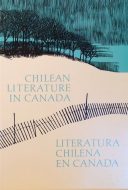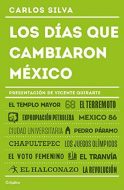Chilean Literature in Canada; Literatura chilena en Canadá
Categories: Latin American Narrative
Prólogo
Si en toda sociedad, la cultura es más que sus productos cultura- les concretos aquello que está constantemente por hacerse, en Canadá esto es quizás más verdadero aún. Una Nación así como una Cultura nacional se constituye a partir de la unidad de lo diverso, de la suma coexistente de sus contradicciones y encuentros. Lo contrario sería una cultura sintética e integradora que no es otra cosa que una empresa colonial donde las mayorías no tienen expresión. Como todo proceso social, por lo tanto, la cultura es un fenómeno plural, proyecto continuamente presente de encuentro y diálogo con los diversos grupos culturales que coexisten en un país. Así es como una real cultura nacional no puede ser sino la organización de las capacidades para convivir en una sociedad pluricultural, diversificada, en la que cada grupo portador de una cultura histórica puede desarrollarse al máximo dialogando con las otras. Esto a la vez significa un esfuerzo por devolver y ampliar el control que cada comunidad debe ejercer en el ámbito de su propia cultura.
Este preámbulo quiere justificar la necesidad de la existencia y la reproducción constante de los productos culturales de aquellos grupos étnicos que han llegado más tardíamente a formar parte del mosaico social que es Canadá. Factor importante en esta necesidad es también el hecho de que la comunidad canadiense redescubra día a día que las diferencias que existen entre los habitantes de las praderas, de las marítimas, de los territorios del norte, de las tierras de habla francesa o de habla inglesa y los nuevos inmigrantes de todas las latitudes, que esas diferencias -repito- es lo que marca la riqueza actual y potencial del país en el terreno cultural. Que en la falta de homogeneidad artística reside un capital civilizatorio cuya articulación es tanto o más importante que la económica o tecnológica. Que la sobrevivencia de escritores, pintores, conjuntos de teatro, cineastas, cantantes populares, orquestas y museos, es la sobrevivencia del tercer pulmón de la sociedad canadiense, aquél menos visible, pero el único capaz de permitir que el país se reconozca a sí mismo como colectividad y como convivencia de diferentes voces. Y que eso es vital para tener una identidad frente a la industria cultural que invade todos los poros sociales y convierte a un país en una gran sociedad anónima.
Foreword
If it is true that culture in any society is that which has yet to be done, rather than the sum of existing cultural products, in Canada this is perhaps even truer. Like a nation, a national culture must be formed by the unity of diverse elements; it is the set of contradictions and encounters between them. Otherwise, it will be a synthetic, totalizing culture that denies expression to the majority of the people. Like any social process, then, culture is a plural phenomenon, a constantly renewed place of encounter and dialogue between the various cultural groups co-existing in the country. A true national culture can only be an organization of various capabilities to live together in a pluri-cultural, diversified society, in which each group having a historical cultural background may be developed to the maximum by entering into productive dialogue with the others. This also involves an effort to promote and broaden the control each community must exercise within the field of its own culture.
This introduction is an attempt to justify the need for the existence and constant reproduction of the cultural products of those ethnic groups having arrived most recently to form part of the social mosaic that is Canada. An important factor in this need is an awareness by the Canadian community as a whole that it is precisely the differences between the people of the prairies, the Maritimes and the North-West territories; between Francophones and Anglophones and the newer immigrants all over the world that constitutes the present and potential wealth of the country in the field of culture. We must recognize that in the lack of artistic homogeneity lies a potential for civilization whose development is just as important as economic or technological advance –that the survival of writers, painters, theatre groups, filmmakerst popular singers, orchestras and museums is the survival of that element of Canadian society which is least visible but most capable of giving our country an identity as a collectivity and as the co-existence of different voices. This is vital if we are to maintain our identity in the face of the cultural industry that invades all our social spaces and threatens to turn the country into one big Corporation.









